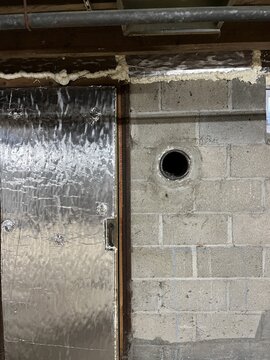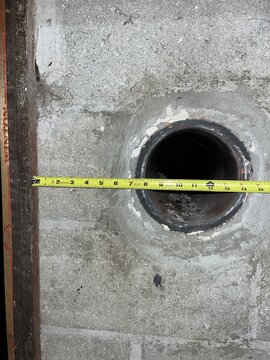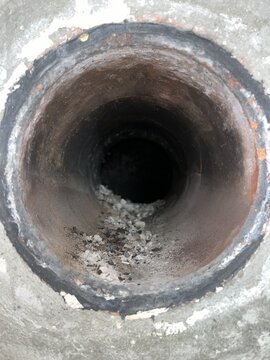Hey all!
Newbie here and having trouble finding some answers to a few question. Was hoping to come to a knowledgeable group to get this install done safely.
I attached a few photos for reference and can attach any number more if needed.
I want to line this masonry chimney to install a wood stove in my unfinished basement which will never be finished. I have the liner, tee and rain cap etc. I am having a bit of trouble finding what parts I need to transition into this fire clay insert safely.
Question 1, the tee is too short to come out of the wall in these photos. How do I safely extend the tee? Can that be done? Should the tee snout stick out of the wall or terminate at the wall?
Question 2, how do I transition the tee to the stove? Is there an adaptor I need or will the stove pipe attach to the tee?
Question 3, since this is a clay lined masonry chimney do I need to insulate the double ply liner I am installing?
Clearance from this wall pass through and the door frame to the left is kind of short so I was looking for some advice on how to do this properly.
Thanks in advance for any help.



Newbie here and having trouble finding some answers to a few question. Was hoping to come to a knowledgeable group to get this install done safely.
I attached a few photos for reference and can attach any number more if needed.
I want to line this masonry chimney to install a wood stove in my unfinished basement which will never be finished. I have the liner, tee and rain cap etc. I am having a bit of trouble finding what parts I need to transition into this fire clay insert safely.
Question 1, the tee is too short to come out of the wall in these photos. How do I safely extend the tee? Can that be done? Should the tee snout stick out of the wall or terminate at the wall?
Question 2, how do I transition the tee to the stove? Is there an adaptor I need or will the stove pipe attach to the tee?
Question 3, since this is a clay lined masonry chimney do I need to insulate the double ply liner I am installing?
Clearance from this wall pass through and the door frame to the left is kind of short so I was looking for some advice on how to do this properly.
Thanks in advance for any help.




